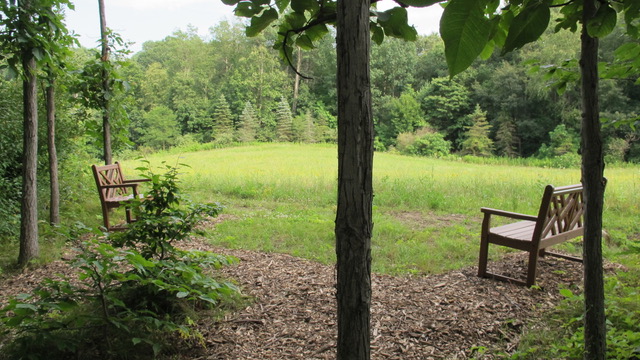“How areyou?” That simple question can open us deeply to the ground of our being. For the question is driven by the innocent verb “to be,”which isthe ground of existence. It is also the most we can know of God — God’s essence. God IS. All of our other descriptions of God are just that, labels that help to identify God in one way or another. In Moses’ initial encounter with God in the bush that was burning but not consumed, God self-identifies with this notion. God identifies as “I Am.” God is Being.
When we pray, we usually think of addressing God in some fashion and approaching one of the aspects of God that we can understand: God the peace-giver, God the provider, God the powerful one, God the fixer of all things awry, God creator, God redeemer, God the comforter. Yet, none of these roles is in itself the essence of God. So another way to pray is to come to God as Being and simply present our own being to be aware with/of that One Being. We call this kind of prayer Contemplative Prayer. It is prayer as alignment rather than answers, of agreement not argument, of yieldedness instead of resistance or insistence.
While there is a place for the conversant kind of prayer where we plead for special mercy from God, there is also a deep need for the kind of prayer where we are not in control but rather we practice giving ourselves over to God—not for a particular result like spiritual growth, but simply to practice giving ourselves over to God. The wonderful thing about this kind of prayer is that it always results in spiritual growth and the awareness of God’s constant Presence throughout our days.
One of the methods of contemplative prayer that has been used through the centuries comes from TheCloud of Unknowing, an anonymous 14th century English treatise on contemplation. In the 20th century, William Menninger, Basil Pennington, and Thomas Keating co-labored on interpreting this work for non-Middle-English speakers and called the method Centering Prayer. The Cloudhas now been translated into contemporary languages. Commentaries on both the book and the method of Centering Prayer have been written and are readily available.
Centering Prayer is easy to learn and effective for aligning our will with God’s will. It is not a set of rules to follow but a way of releasing what is not ours to hold and holding onto God instead. George MacDonald, in the the novel David Elginbrodhas that eponymous character say, “The kingdom of heaven is not come, when God’s will is our law: it is come when God’s will is our will. While God’s will is our law, we are but a kind of noble slave; when his will is our will, we are free children. Nothing in nature is free enough to be a symbol for the state of those who act immediately from the essence of their hidden life, and the recognition of God’s will as that essence.” Acting immediately from the essence of a life hidden in God is both the goal and result of the practice of Centering Prayer.
I encourage you to read The Cloud of Unknowing ora book on Centering Prayer and give it a try. Brief information on the method is available on the Contemplative Outreach website. We also practice Centering Prayer together at The Hermitage each Saturday morning. You are welcome to join us.
Naomi Wenger, March 2019


